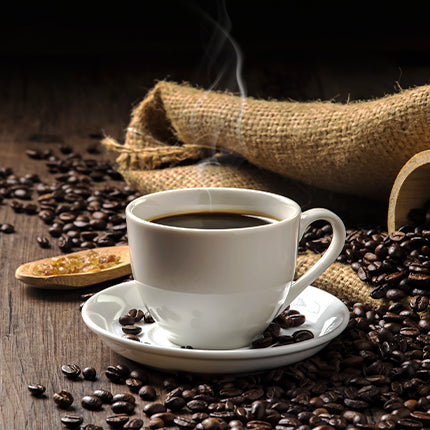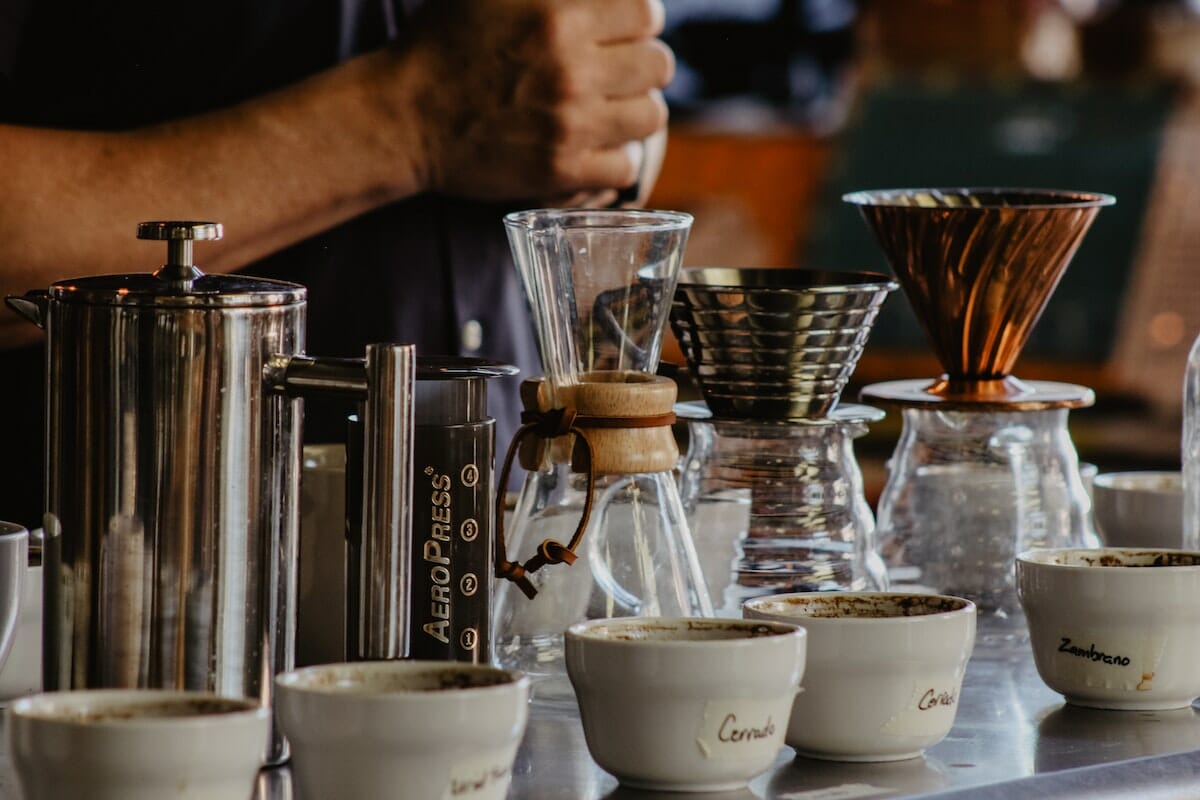Mastering Coffee Brewing Methods: Necessary Methods for Every Coffee Lover
Mastering Coffee Brewing Methods: Necessary Methods for Every Coffee Lover
Blog Article
The Science Behind Coffee Developing: Exactly How Temperature Level and Time Affect Your Beverage
Comprehending the science behind coffee brewing exposes that temperature level and time are not plain variables but crucial elements that determine the drink's flavor profile and general high quality. The ideal brewing temperature level typically drops between 195 ° F and 205 ° F, while the duration of removal differs dramatically throughout different techniques. This interplay of elements can lead to a cup that is either delightful or disappointing. As we check out the subtleties of these aspects, the inquiry develops: how can one properly balance temperature and time to accomplish that perfect mixture?
The Chemistry of Coffee Extraction
The chemistry of coffee extraction looks into the detailed procedures that transform raw coffee beans into the fragrant drink appreciated worldwide. This change primarily involves the solubility of various compounds present in the beans, which are affected by factors such as grind dimension, water high quality, and the developing approach used.
Throughout the developing process, warm water works as a solvent, extracting soluble compounds, including caffeine, lipids, sugars, and acids, from the coffee grounds. Each substance adds to the flavor account, fragrance, and body of the final drink. As an example, acids are accountable for intense and zesty notes, while oils add to a rich mouthfeel.
The removal process is not uniform; different substances liquify at different rates. The initial phases of brewing extract acids and sugars, resulting in an enjoyable acidity, while extended extraction can result in bitterness because of over-extraction of unwanted compounds. Recognizing these chemical interactions is critical for maximizing developing techniques, as the balance in between extraction time and water temperature level can substantially influence the overall top quality of the coffee. Eventually, grasping the chemistry of coffee removal is essential to accomplishing a tasty and well-shaped cup.
Ideal Developing Temperatures
Finding the appropriate developing temperature is important for opening the full possibility of coffee tastes and fragrances - coffee brewing methods. Research study indicates that the optimal array for developing coffee lies between 195 ° F to 205 ° F(90 ° C to 96 ° C) Within this array, the extraction process properly liquifies the preferable soluble substances in coffee beans, leading to a savory and well balanced cup
Brewing at lower temperatures, such as below 195 ° F(90 ° C ), may cause under-extraction, yielding a weak and acidic mixture with muted flavors. On the other hand, developing at temperatures going beyond 205 ° F(96 ° C) can result in over-extraction, creating a bitter and severe taste due to the extreme dissolution of undesirable compounds, such as tannins.
In addition, the perfect brewing temperature level can differ depending upon the coffee bean type and roast degree. Lighter roasts commonly profit from slightly greater temperature levels to boost their intricate taste accounts, while darker roasts might be much better matched to reduced temperatures to alleviate anger.
Eventually, keeping precision in brewing temperatures is crucial for accomplishing an unified balance of flavors, guaranteeing that every cup of coffee delivers a rewarding sensory experience.
Impact of Developing Time
Brewing time plays a crucial role in determining the taste account and total top quality of coffee. The extraction procedure, which influences the taste, scent, and body of the drink, is mostly depending on for how long the coffee premises touch with water. Much shorter brewing times can cause under-extraction, bring about a weak or sour flavor, as inadequate soluble substances are liquified. On the other hand, prolonged brewing can lead to over-extraction, where unfavorable compounds are launched, causing an astringent or bitter preference.
Ideal brewing time varies relying on the approach made use of and the grind size of the coffee. For instance, a French press usually needs concerning four minutes, while coffee extraction is generally completed within 25 to 30 seconds. It is necessary to adjust brewing time in combination with various other variables, such as water temperature and coffee-to-water ratio, to attain the wanted taste profile.
Recognizing the influence of brewing time allows coffee enthusiasts to improve their developing strategies, inevitably enhancing the sensory experience of their mug (coffee brewing methods). With cautious attention to this variable, one can open the full potential of the coffee, disclosing its unique characteristics and subtleties
Brewing Techniques and Their Impacts

As an example, approaches like French press and cool brew permit a much longer steeping time, leading to a fuller body and durable flavor as a result of enhanced removal of oils and soluble solids. On the other hand, coffee brewing uses high pressure and a shorter removal time, generating a focused shot that emphasizes extreme flavors and an abundant crema.
Pour-over techniques, such as Chemex or V60, use an even more controlled extraction procedure, enabling the brewer to adjust flow price and water circulation, which can improve illumination and clarity. Percolation approaches cycle water via the coffee premises several times, leading to a stronger, commonly bitter taste.
Finally, the usage of paper filters versus metal filters can additionally influence the final view publisher site preference; paper filters commonly produce a blog here cleaner mug by capturing oils and fine fragments, while metal filters allow more oils to travel through, contributing to a fuller mouthfeel - coffee brewing methods. Recognizing these nuances can elevate the coffee experience significantly
Tips for Improving Your Mixture
A well-executed mixture can transform also the simplest coffee right into an exceptional experience. To achieve this, interest to detail is crucial. Start with top notch, newly roasted beans, as their taste profile decreases gradually. Grind the beans just prior to making to take full advantage of quality, making certain the grind size matches your brewing technique-- coarser for French press and finer for coffee.
Water high quality plays a crucial function; usage filteringed system water complimentary from impurities. The excellent brewing temperature ranges in between 195 ° F and 205 ° F(90 ° C to 96 ° C ) As well hot can scorch the coffee, while also trendy may under-extract flavors.
Timing is equally crucial. For immersion methods, soaking for three to five mins is ideal, whereas drip methods generally take around five minutes. Experiment with mixture times to find your preferred toughness.

Final Thought
In summary, the detailed connection in between temperature level and time is paramount in the coffee developing procedure. Comprehending these scientific principles encourages individuals to fine-tune their developing strategies, ultimately leading to a more balanced and enjoyable coffee experience.
Comprehending the science behind coffee developing reveals that temperature level and time are not mere variables yet crucial aspects that determine the drink's flavor profile and general high quality. Comprehending these chemical interactions is essential for optimizing brewing strategies, as the balance between removal time and water temperature level can considerably affect the total high quality of the coffee.Developing time plays an essential function in establishing the flavor account and general high quality of coffee. By concentrating on these elements-- bean high quality, grind size, water temperature level, soaking time, and ratio-- you can boost your coffee developing process, resulting in a consistently premium mug.
In recap, the complex connection between temperature and time is paramount in the coffee brewing process.
Report this page